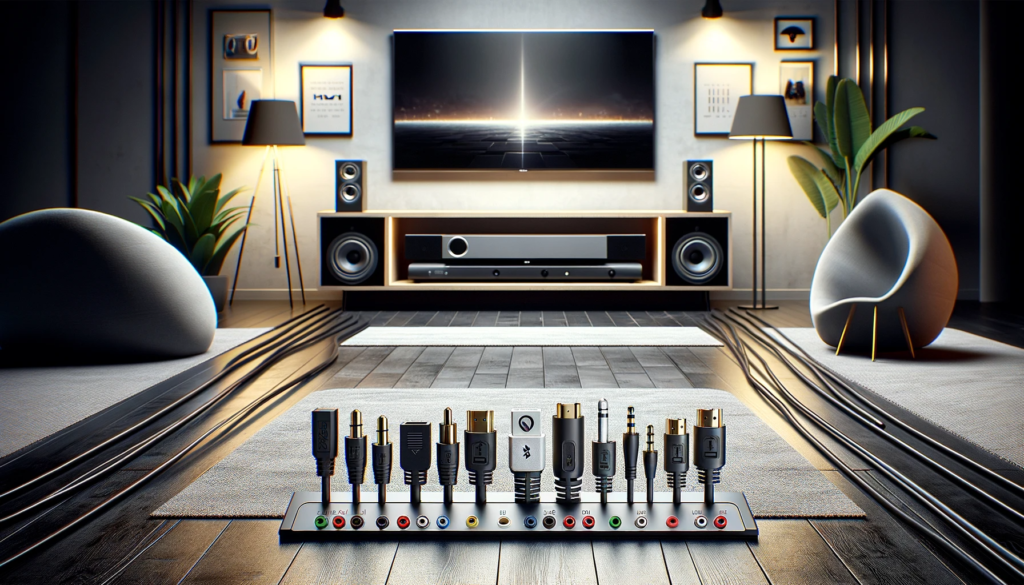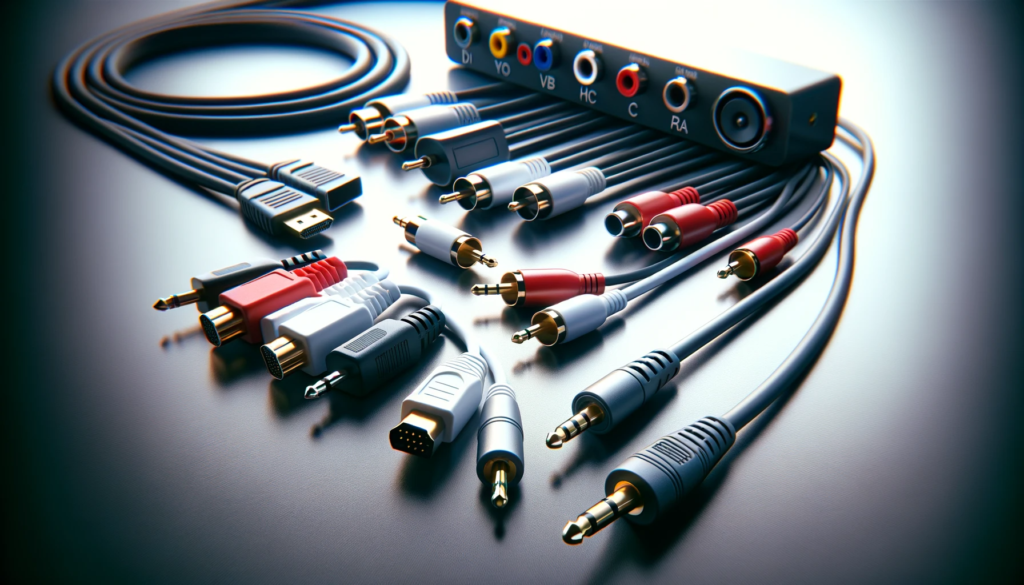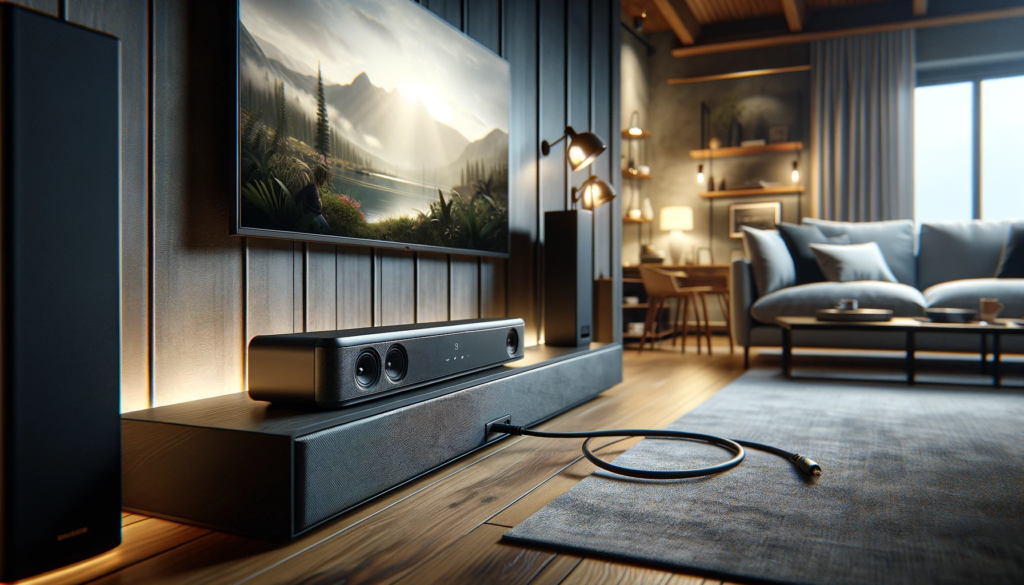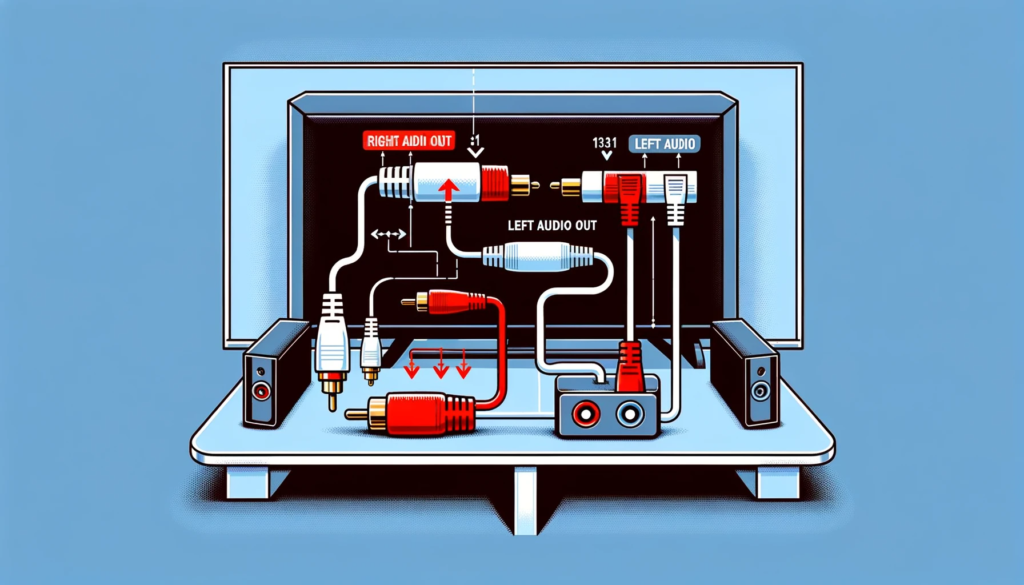Struggling to hear clear dialogue and robust sound effects from your flatscreen’s less-than-stellar built-in speakers?
Upgrading to a full-fledged soundbar can seriously amplify your TV audio quality.
But successfully hooking up an external speaker system relies first on selecting and properly utilizing the right connection method for your components.
Let’s examine common soundbar and TV input and output options to secure booming surround sound.
How To Connect Soundbar to TV?

The way to connect a soundbar to a TV depends on the available ports.
The best options are HDMI ARC or optical cables for digital audio.
Alternatives like RCA, Bluetooth or 3.5mm auxiliary work too.
We’ll explore the specific steps for each method below to help you get big sound from your TV.
Determine Connection Types Between TV and Soundbar

There are a few different options when it comes to connecting a soundbar to a TV.
The best connection type will depend on the inputs and outputs available on both devices.
Some of the most common options for connecting a soundbar to a TV include an HDMI connection, an Optical/Toslink connection, RCA cables, Bluetooth, or a simple analog 3.5mm connection.
An HDMI connection is often the best option if both your TV and soundbar support it.
HDMI cables carry both digital video and audio signals, allowing you to consolidate cable connections.
HDMI connections support high-quality, uncompressed audio for the best sound quality.
The next best option is typically an Optical or Toslink connection.
Optical cables can carry multichannel audio signals between a TV and soundbar.
While not as robust as HDMI, optical connections can still transmit high quality digital audio without the need for video passthrough.
RCA cables, Bluetooth, and 3.5mm analog connections are also options if HDMI and Optical inputs are not available.
RCA connections will get audio from the TV to soundbar, but quality is limited compared to digital audio signals.
Bluetooth can provide wireless connectivity between the TV and soundbar which is convenient for setup.
However, Bluetooth audio tends to be more compressed.
Finally, a 3.5mm headphone-style cable will transmit basic analog stereo audio to the soundbar if no other options are available.
Prepare Necessary Cables

Before connecting your soundbar to your TV, make sure you have the necessary cables at hand for the type of connection you wish to use.
The most common ports used to connect a soundbar to a TV are HDMI, Optical/Toslink, RCA, and the 3.5mm headphone jack.
Having the proper cables ready before starting the installation process can save lots of time and frustration.
If you plan on using an HDMI connection between the soundbar and TV, have a spare certified HDMI cable available.
Make sure the cable is long enough to comfortably reach from your TV’s HDMI port to the soundbar’s HDMI input.
When possible, use HDMI cables rated for 4K and HDR to ensure maximum compatibility.
For an Optical or Toslink connection, have a Toslink optical cable available.
These cables have a distinct squared-off plastic connector on each end that fits into the digital optical input and output ports found on most TVs and soundbars.
Verify the length needed for your setup and secure the connectors properly for a reliable audio connection.
You may also use analog RCA audio cables or a basic stereo 3.5mm audio cable to connect the TV and soundbar.
Match up the ports between the devices, making sure to differentiate between left and right stereo audio channels as necessary.
Though analog, these connections can still transmit a stereo signal from the TV to external speakers.
Connect Soundbar to TV via HDMI

If both your television and your new soundbar include HDMI ports, using an HDMI cable to connect the two offers important advantages compared to other connection types.
HDMI cables neatly package both digital video signals as well as multichannel uncompressed audio into a single cable.
This allows you to transmit video from a streaming device or cable box to the TV while routing the accompanying audio to the soundbar.
The first step is locating the HDMI output port on your playback device, such as a Blu-ray player or streaming video stick.
Then identify a free HDMI input on your television, as well as the HDMI input or labeled ARC HDMI port on the soundbar system.
With the devices powered off, connect one end of the HDMI cable to the available output port on your video source, then connect the other end to the open TV input.
Finally, use a second HDMI cable to link the TV’s ARC-compatible HDMI port to the soundbar’s HDMI input.
With all devices powered on, you may need to select the correct TV input if not already automatically detected.
Most modern TV operating systems also include specific audio output settings, which allow you to select HDMI ARC signal as the audio output to utilize your new soundbar system.
Simply make this selection in the audio settings menu.
The devices and HDMI cabling handle everything else automatically, keeping video on the television while flawlessly transmitting multi-channel audio to the attached soundbar.
Connect Using Optical/Toslink

Connecting a soundbar to a smart TV via Optical or Toslink cable is a fairly straightforward process.
Optical cables utilize light signals to transmit digital audio over short distances with minimal interference or loss of quality.
TV platforms increasingly rely on slimmer port options, making a Toslink optical cable an attractive wired alternative to bulkier HDMI for dedicated audio connectivity.
To get started, locate the Optical or “SPDIF OUT” port on the rear of your smart television.
This rectangular port with a swing open cover should be labelled clearly.
The soundbar system will also have a similar “Optical IN” port, distinguishable from standard RCA or aux ports by the unique square shape and ridged plastic housing around the receiving end of the connector.
With both devices powered off to start, insert the cable ends into their proper ports: one to the TV output; and the other to the soundbar input.
When powered back on, the final and most important step is changing the audio output channel in your TV’s settings menus.
Access the options related to speaker configuration and audio channel routing.
Often labelled “Digital Audio Out”, you’ll need to change the radio button option here from TV speakers to optical/SPDIF.
The TV then understands to redirect all audio signals out through its optical output directly into the attached soundbar, bypassing the internal speakers.
As long as the soundbar is also set to Optical audio input mode, you should hear flawless audio synced perfectly with video playback solely via this single digital optical cable connection.
Connect Through RCA Cables

RCA cables are a classic analog method to transmit stereo audio signals between audio/video components like TVs and speakers.
Though not as crisp and lossless as a digital connection, properly connecting TV to soundbar via analog red and white RCA audio cables can return dependable results.
Just be careful to correctly match up each distinct channel.
You’ll first want to locate the paired RCA style ports on both the television and your external soundbar system, often labelled “AUDIO OUT” on the TV and “AUX IN” on the speaker.
Typical RCA connectors are color coded, with red signifying right channel audio and white signifying left channel audio.
Some sound systems or powered speakers may also include ports for both stereo channels on a single cable, for simplicity’s sake.
With the devices turned off, connect the white RCA plug from a cable pair to the white (left) audio out port on the TV while the red connector links to the red (right) port.
Maintain these color orientations while plugging the opposite cable ends into the corresponding RCA stereo input ports available on your speaker system.
Having the left/right channels swapped by accidentally crossing these connections can result in weak centralized audio instead of proper channel separation.
Finally, within the TV’s settings menus under audio output options, simply change the signal routing from the TV speakers to “RCA audio out” or similarly labeled.
The TV will now redirect its sound through the RCA cables into your powered audio speaker system, bypassing the less powerful internal TV speakers.
So long as volume levels align properly between devices, analog RCA cables should transmit clear, faithful stereo TV audio to your external soundbar setup.
Pair Soundbar to TV Via Bluetooth

Bluetooth pairing provides a wireless connection option between smart TV platform and compatible soundbar speaker system.
This saves you from running unsightly cables between devices while maintaining the audio enhancement of an external speaker system.
Most modern televisions contain built-in Bluetooth connectivity; double check specifications for your model to confirm.
Initiating Bluetooth pairing mode will vary between individual soundbar models.
Many feature dedicated “Pairing” buttons on the speaker chassis or remote to activate scanning for new devices.
Refer to your soundbar manual for precise pairing procedures.
The TV menu will include a similar Bluetooth settings section – here you can power on discovery allowing the TV to scan for the soundbar signal once pairing mode engages.
With both TV and soundbar actively searching, the external speaker device should appear within the TV’s menu for available connections.
Select your soundbar’s identifying info from the TV’s Bluetooth device list, and the two should automatically sync via wireless Bluetooth connection assuming proper pairing authentication.
You may hear an audible cue from the soundbar once solid linkage is established.
Finally, direct overall audio output to use the now wirelessly-connected Bluetooth sound system within TV configuration.
The speakers themselves may also need to be switched into Bluetooth mode depending on the model.
Your television programming’s sound should effortlessly sync from TV to upgraded audio hardware.
Bluetooth range between paired devices maxes out around 30 feet – perfect for clear sound in living room or media room installations.
Connect Soundbar to TV Headphone Jack
If your TV has a headphone jack audio output, this analog stereo connection can integrate audio into a soundbar system without extra cables or a digitally compatible sound system.
Any standard 3.5mm auxiliary cable can transmit basic stereo TV audio to an open AUX input on your soundbar.
While not as advanced as HDMI ARC or optical pipelines, the simplicity and universality of the headphone jack offers a last resort.
First, inspect the rear port cluster of your television for a mini headphone jack, which should be identifiable by the iconic headset icon nearby.
Then locate an open “AUX” input amongst your soundbar speaker’s connection options intended for analog stereo signals.
With the hardware powered down, connect one end of a standard male-to-male 3.5mm audio patch cable to the TV’s headphone style port.
Secure the other end into the related AUX style jack on the soundbar.
With devices now powered back on, activate AUX or analog input mode on the speaker system if not automatically detected.
Finally, adjust audio output channel settings within the television’s OS menu itself.
Instead of default internal speakers, change options to headphone jack output.
This properly redirects sound through the 3.5mm cable path into the powered external sound hardware.
Keep analog audio output volume on the TV around 75% maximum, then control actual listening volumes through the soundbar system itself for optimal signal.
Though not as feature-rich as HDMI or optical digital, analog 3.5mm stereo cables can still transfer TV audio sources to an external soundbar’s more powerful amplification and speaker components as needed.
Conclusion
Connecting a soundbar to your TV can dramatically improve your audio experience, but the variety of connection options can seem overwhelming.
Fortunately, with the right cables and settings adjustments, hooking up a soundbar is actually quite straightforward.
HDMI ARC delivers the highest quality and consolidates cable connections, while optical Toslink also transmits pristine digital audio if HDMI is unavailable.
And even basic analog connections via RCA, Bluetooth or 3.5mm auxiliary can transmit stereo TV sound to powered external speakers when needed.
So don’t settle for lackluster native TV speaker performance – get your soundbar connected today and enjoy a surround sound theater experience right from your living room.
